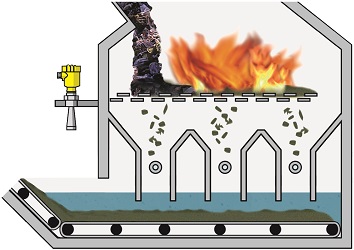Radar delivers big water savings in EfW
Cory Riverside Energy is a waste to energy plant to the East of London. With a population approaching nine million people, London has an incredible appetite for energy. Keeping the lights on in the face of increasing demand is one of the major challenges facing the city today. It produces around 22 million tonnes of waste every year. Or, to put it another way, enough to fill the largest skyscraper at Canary Wharf every eight days. At this site they utilise this waste to help provide London with a safe, secure, affordable and sustainable energy supply, which also makes great environmental sense. The site at Belvedere uses these materials, that would otherwise have gone to landfill, as a feedstock to generate electricity. As one of the largest operations of its kind in the UK, this facility generates c.525,000 MWh of electricity each year from processing around 750,000 tonnes of waste. What’s more, they use the River Thames as a ‘green highway’ to move the waste from the centre of the city to the facility on their fleet of tugs and barges, removing around 100,000 truck movements a year off the UK capital’s congested roads.
Of course creating energy from waste creates a hot ash residue that needs cooling quickly. This is achieved by quenching it in water via an ‘ash expeller’ system before stockpiling for disposal. Each system sits under one of the three main combustion chambers with a moving grates, the waste ash can drop into a water filled hopper below. The quenched ash is then scraped out by a ram and removed to the rear side via a conveyor into a stockpile chamber for loading out and disposal/recycling.
The water used in the ash quenching process needs a constant level to be maintained through replenishment of either recycled or fresh mains supplies, this is monitored in a small balance tank off the main chamber.
The optimum solution is of course to use recycled and recovered plant water, which reduces costs and environmental impact. A simple level probe to control the water will do the job? Well its more complicated than you might think, the water contains many contaminants from the ash, readily adhering and building up on any surface and the ‘ideal water level’ control band is only over a few mm. The temperature runs about 50 °C, which produces a lot of condensation and sublimation onto the sensor. The total measuring range is only around 15cm, there can also be regular foaming on the surface, carrying ash residue and leaving behind deposits. The site engineer added extra process information, “The ram movement in the ash expeller also plays a part, this ram is used to keep the ash moving through the expeller. One of the main issues we have is that the ram movement causes the water level to fluctuate rapidly and it encourages foaming, the old level device often couldn’t keep up or lose the signal and caused it to overflow.”
If the probe isn’t reading or working correctly, the automatic safe ‘default’ is to keep fresh water continuously running into the ash expeller system. This results in excess water continually overflowing out to effluent treatment, so this incurs additional operational and environmental costs. So suddenly this ‘simple’ water level application is now looking a little more complex. The original plant was supplied with ‘Guided Wave Radars’ for the level control, they are very good in extreme conditions. However, they can struggle to work reliably over very short ranges, especially when heavy coating of the guide rod element is factored in. They suffered both with signal loss and ‘run time’ error, believed to caused by the combination of build up, rapid level change, condensation and foaming surfaces. These errors caused the water replenishment system to run the fresh mains water ‘emergency top-up’ almost continually. Ongoing maintenance and cleaning on the devices was high, too.
When a new 80 GHz contactless liquid level radar was launched and demonstrated it could work with mm resolution in a small a vessel like a 250ml water bottle, Cory engineers took notice - this could be a solution. Especially as it was claimed it could cope with condensation and build up on the sensor face, too. After a successful on site demonstration test with a battery-powered unit, they installed a trial device on an existing nozzle. The unit worked very well, but it was soon discovered that sublimation deposits carried by foam was blocking the mounting nozzle and would soon become a problem. It was easy to monitor and diagnose via the echo curve available in the VEGATOOLS Bluetooth App. As a result a small low pressure purge was introduced inside the nozzle, which has cured this problem. Even though there is still some condensation and sublimation of the sensor face, it copes with this.
Top trend shows the very high rate of mains water top up valve operations before with the guided wave radar system, the lower graph since the contactless 80 GHz level radar was fitted, now water is only being used only when needed.
The before and after trend of the water valve operation tells the story, very much reduced usage of mains water, saving both operational costs and environmental impact. The radar has been installed and working reliably for a year and the other two ash expellers are also scheduled to be fitted with the new devices. The new radars are also being used in other applications, including measuring through plastic chemical tanks elsewhere on the site.
Product
Export this article
Download as PDFShare this article
Comments ({{comments.length}})
{{getCommentAuthor(comment, "Anonymous")}} {{comment.timestamp | date : "dd.MM.yyyy HH:mm" }}
{{comment.comment}}








